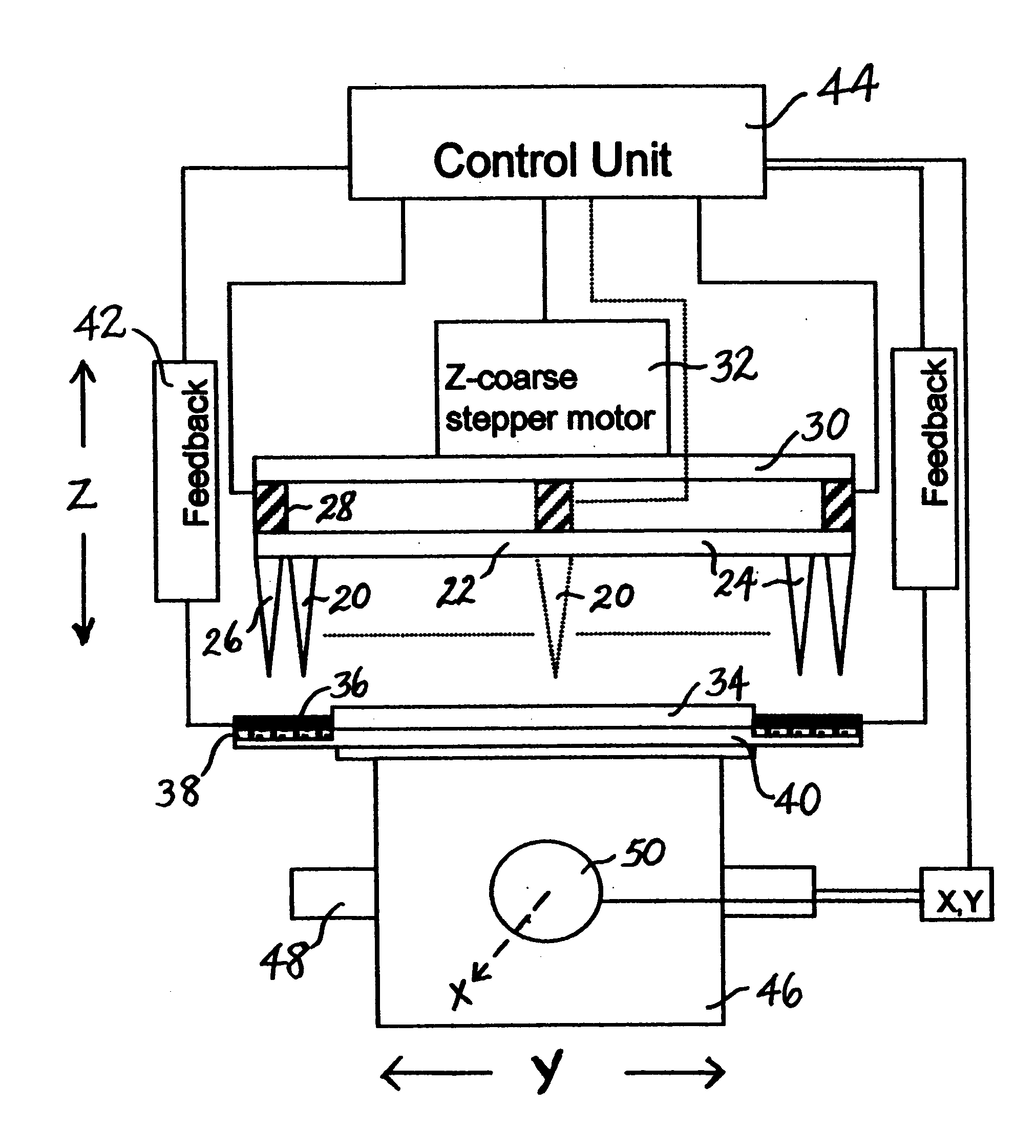High precision three-dimensional alignment system for lithography, fabrication and inspection
a three-dimensional alignment and lithography technology, applied in the direction of instruments, electrical controllers, program control, etc., can solve the problems of limiting the prompt application of such photolithography systems, affecting the participation of the participants, and affecting the quality of the finished produ
- Summary
- Abstract
- Description
- Claims
- Application Information
AI Technical Summary
Benefits of technology
Problems solved by technology
Method used
Image
Examples
Embodiment Construction
The present invention uses scanning probe microscopy techniques to provide a high precision three-dimensional microalignment system. Microalignment and micromanipulation refer to alignment and manipulation on a micrometer, nanometer or subnanometer scale. The features of this system is described below using nanolithography as an example. The nanolithography features and images produced may be as small as subnanometers to hundreds of nanometers. Two embodiments of the present invention will be described. In both embodiments, piezoelectric material is provided for the fine distance control unit. The first embodiment provides a piezoelectric sensor to sense the approach of the scribing tips. The second embodiment provides other types of proximity detectors for the same purpose.
Referring to FIG. 1, this embodiment of the present invention comprises a plurality of tips 20 fabricated on the base 22 of a scribing tool 24 such as a silicon wafer to perform fabrication of sub-100 nm features...
PUM
 Login to View More
Login to View More Abstract
Description
Claims
Application Information
 Login to View More
Login to View More - R&D
- Intellectual Property
- Life Sciences
- Materials
- Tech Scout
- Unparalleled Data Quality
- Higher Quality Content
- 60% Fewer Hallucinations
Browse by: Latest US Patents, China's latest patents, Technical Efficacy Thesaurus, Application Domain, Technology Topic, Popular Technical Reports.
© 2025 PatSnap. All rights reserved.Legal|Privacy policy|Modern Slavery Act Transparency Statement|Sitemap|About US| Contact US: help@patsnap.com



